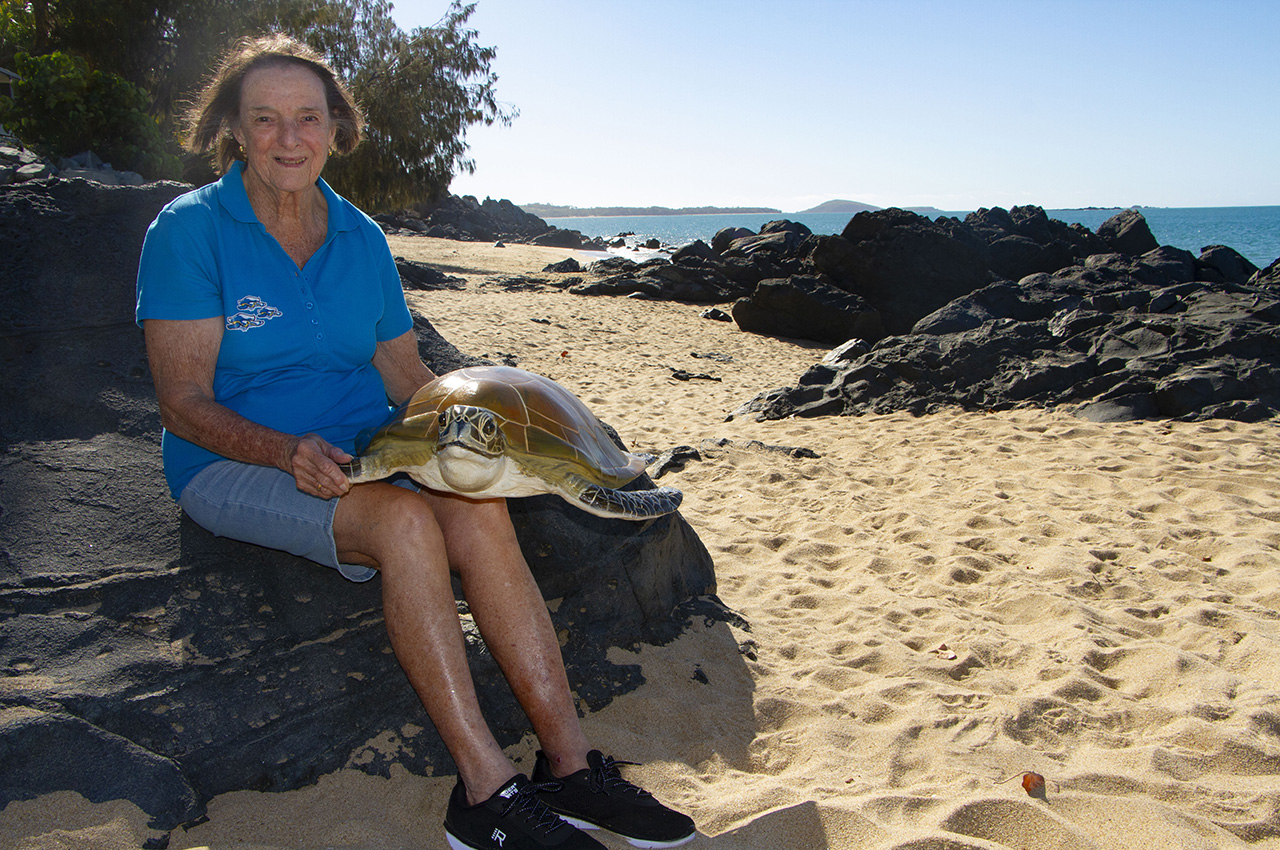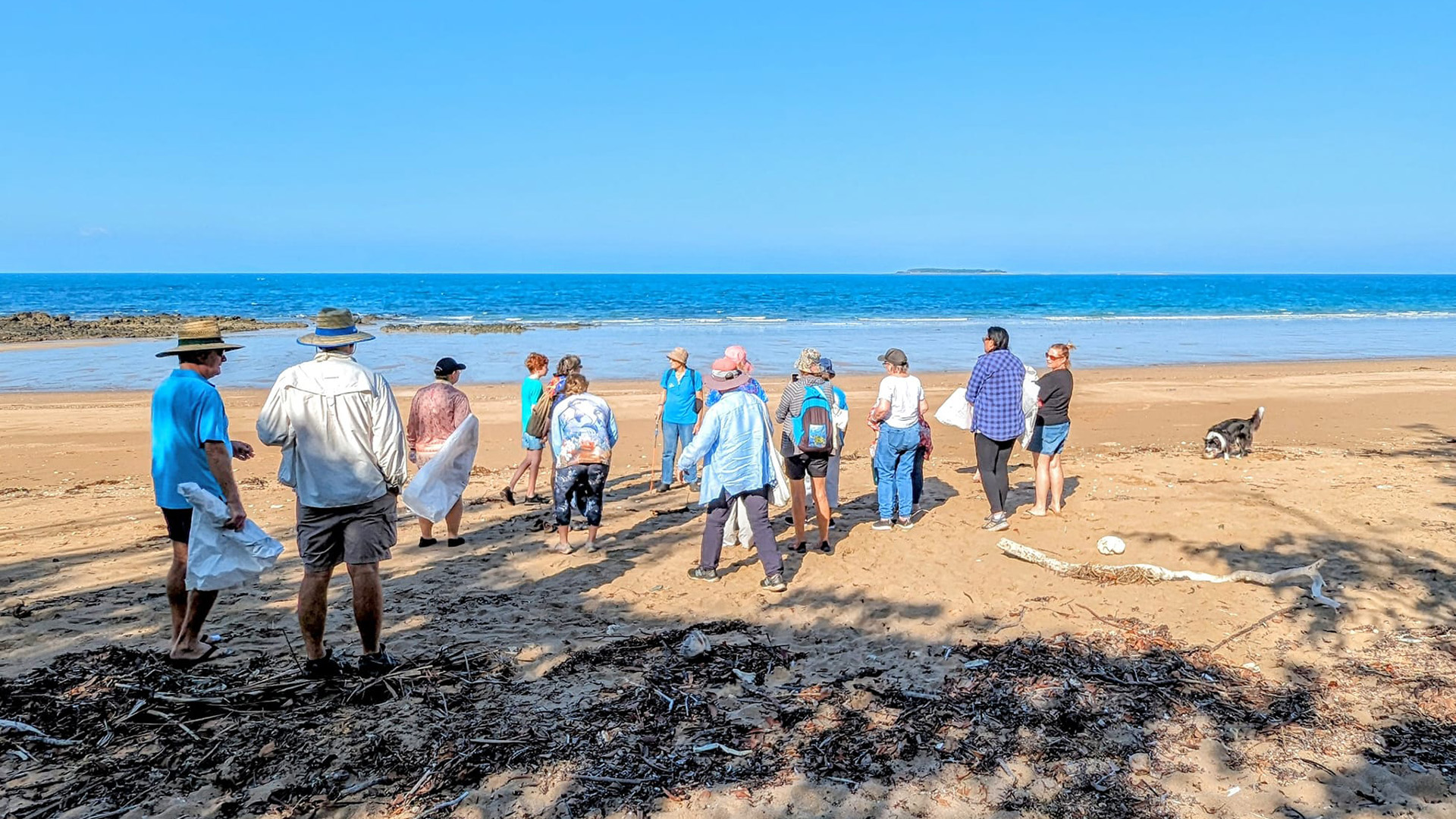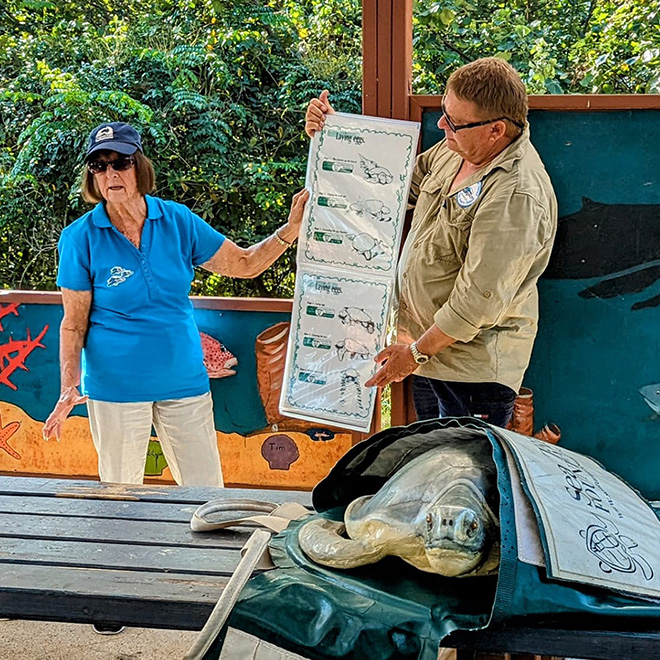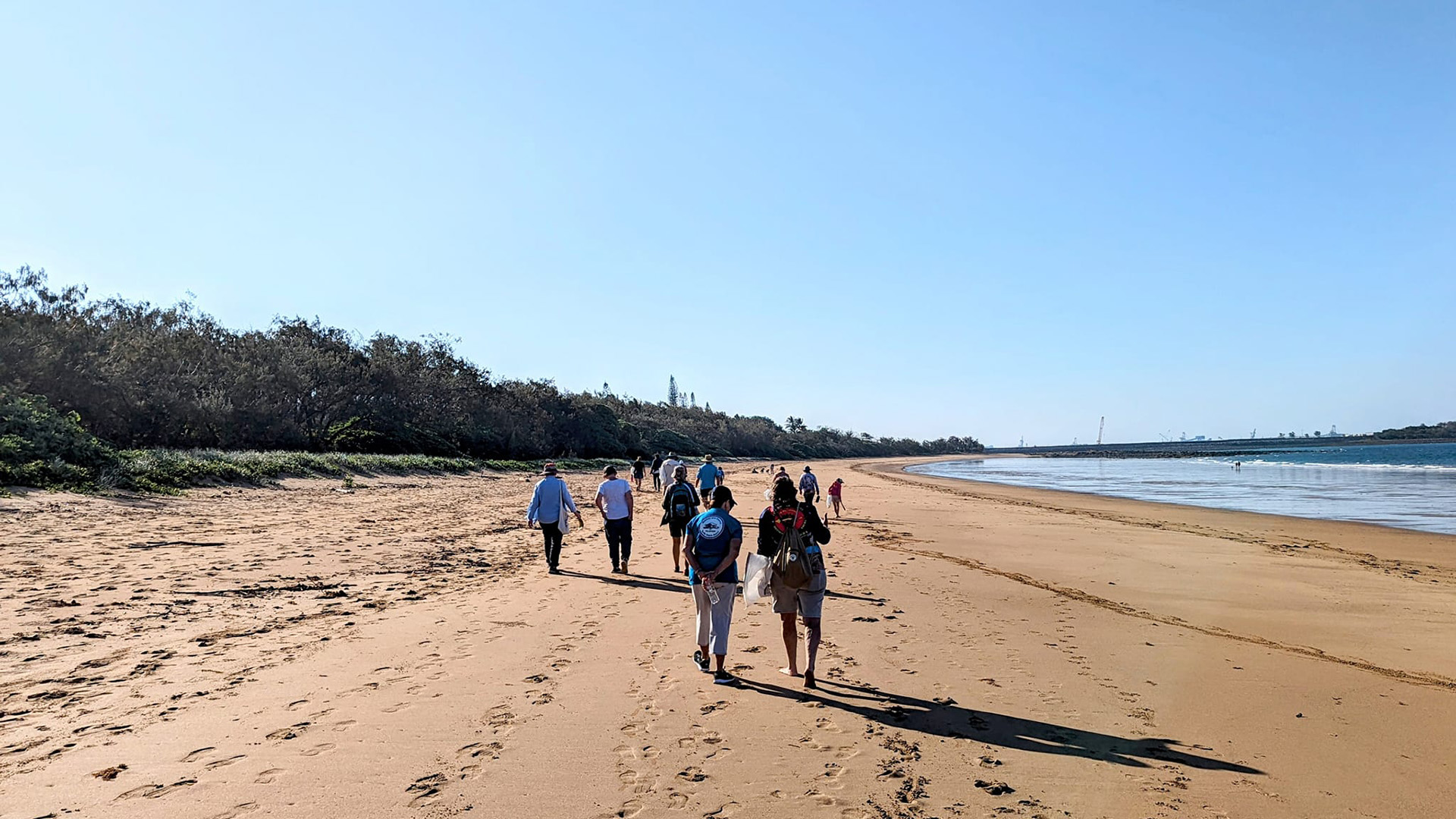Three decades of turtle monitoring

Time, date, location, size, number of eggs. You name it, chances are the Mackay and District Turtle Watch have recorded it
The group monitor beaches up and down the Mackay coastline between Armstrong Beach to Seaforth Beach, plus nearby Rabbit and Newry Island. In 2024, they will celebrate 35 years of turtle data.
Coincidentally, it also takes roughly 30 years for a turtle hatchling to reach maturity and start laying eggs of her own, with females usually migrating back to their place of birth to nest.
Fay Griffin, who has collected turtle nesting data on Mackay beaches for more than 30 years, likes to think that somewhere in the thousands of turtle hatchlings she’s helped make it to the ocean over the years, at least one of them has come back to say hello, and maybe thanks.
It’s this long maturity window that makes long-term monitoring all the more important for turtle species that lay on Mackay beaches – such as the flatback (Natator depressus) and green sea turtle (Chelonia mydas) – as identifying any trends in nesting habits will only appear after multiple generations.
In the Mackay region people love to visit the beach, but human activity such as campfires, 4WDs and unleashed dogs can pose a threat to successful turtle nesting.
With that in mind, Fay said the best thing you can do is assume all beaches in the Mackay region are nesting beaches.
“Once the tide has come in and washed the turtle tracks away, the turtle nests are hard to spot. You might be driving along the beach and crush a nest, or light a fire and overheat hatchlings that you didn’t even know were there,” she said.

Climate and water quality play a part in turtle population
There are also broader issues that can affect turtle nesting such as climate change and severe weather events.
“The sand temperature during incubation determines the sex of the hatchlings. The different breeds have slightly different pivotal temperatures. With the flatback it’s 29.3 degrees celsius. Below that you’ve got male, and above that you’ve female.
“You do get male and female hatchlings from the same nest because of the shape of it – different parts are cooler than others. But what they are afraid of with climate change, is that there’s going to be so many females and not enough males to go around.
“Water quality can also have an impact, particularly when it’s flooding. A few years ago we had a lot of rain all up and down the coast and flooding in so many different places. The plume from the rivers, particularly the Pioneer and the Fitzroy River damaged all the inshore seagrass beds.
The best thing you can do is assume all Mackay beaches are nesting beaches

“It was a long time after the flooding, but we were warned that we would have sick and dying turtles getting washed up and we did. We lost a lot. And that wasn’t just here, that was all up and down the coast.”
Turtles counted, measured and tracked
In a single nesting season between October and March anywhere from 100 to 200 turtles will nest on Mackay beaches.
Mackay and District Turtle Watch members will walk the beaches at night or early morning around the time of the high tide, to keep an eye out for any turtles making their way up the beach. Care is taken not to disturb the turtle at all while she is digging the nest, but once she starts to lay her eggs, members with the appropriate permits will approach the turtle and measure the length of the shell. They may tag the turtle if it doesn’t already have one.
After the turtle goes back out to sea, members record the date and location of the nest so that they can come back when the baby turtles are due to hatch. Hatching success is recorded by counting the number of egg shells and unhatched eggs. All of this information is analysed by the group and submitted to the Queensland Turtle Conservation Project.

How you can help
- If you see a turtle – give them space and do not touch! Marine turtles are protected and only authorised persons with the appropriate permit should be handling turtles, their nest sites and hatchlings.
- If you see turtle tracks, nesting or hatching activity – make note of the date, time and location and call the Mackay and District Turtle Watch on 0427 549 613.
- Report a sick, injured or dead turtle to the Marine Stranding Hotline on 1300 130 372.
- Assume all beaches are nesting beaches.
- Keep plastic bags, fishing line and other rubbish out of waterways and beaches.
- Keep vehicles off nesting beaches.
- Do not light fires on nesting beaches.
- Keep dogs on a leash.
- Keep lighting to a minimum – hatchlings find their way to the ocean by moving towards the lightest horizon they see. Artificial lighting can disorient the hatchling from finding their way to the water.


